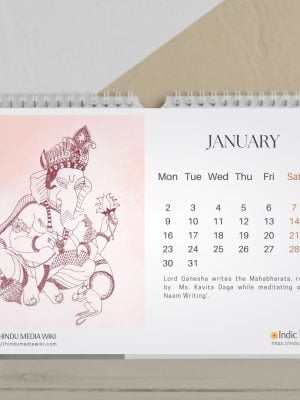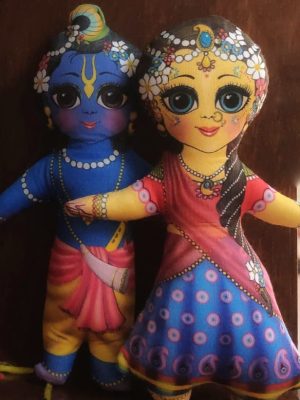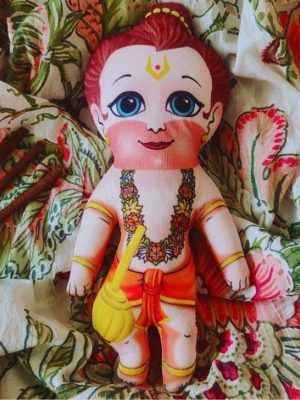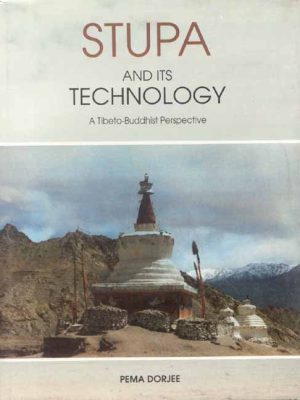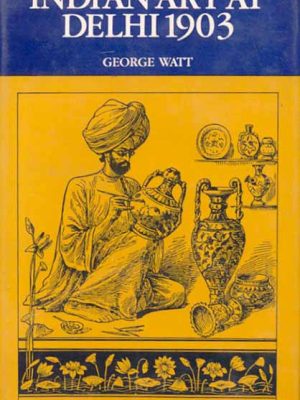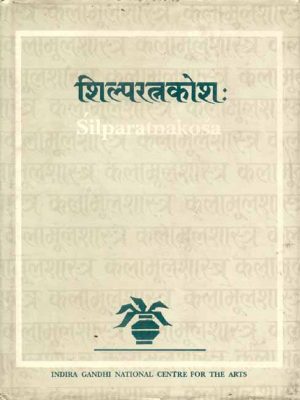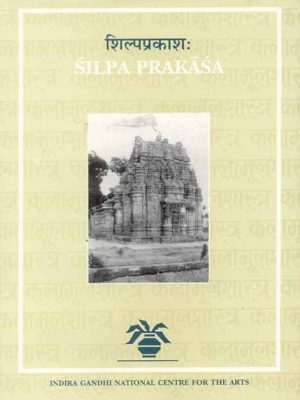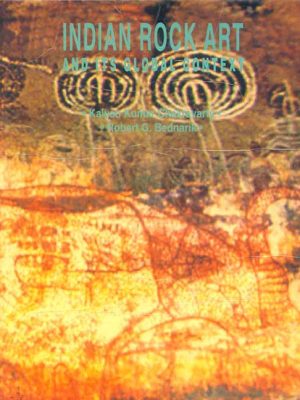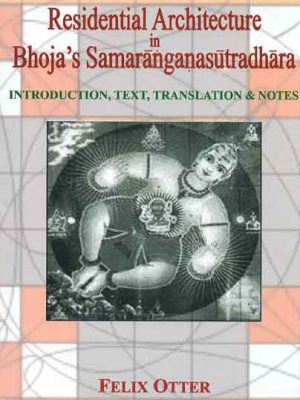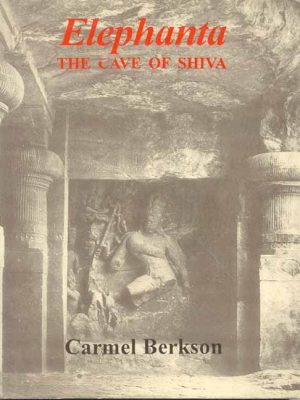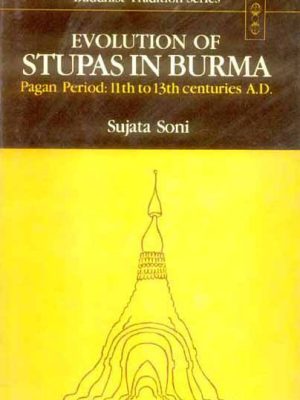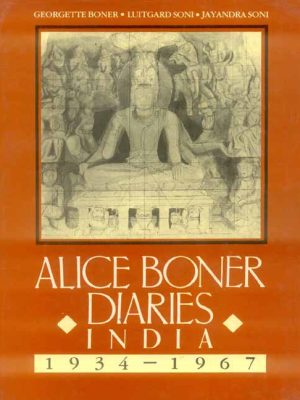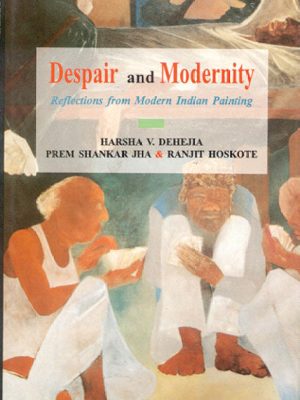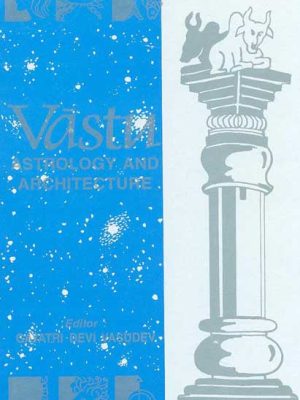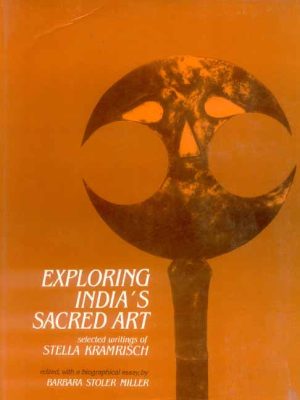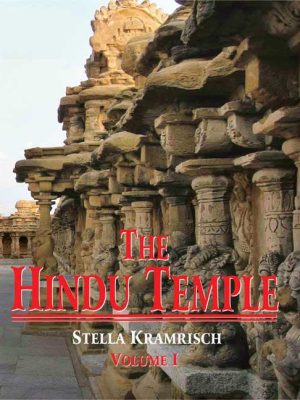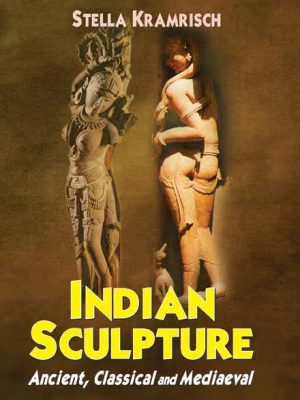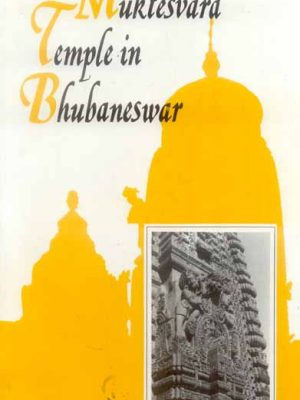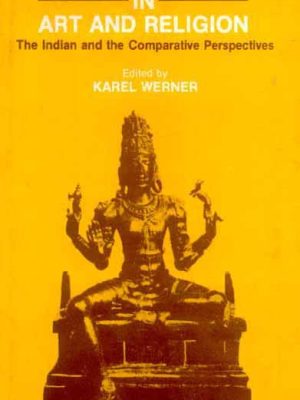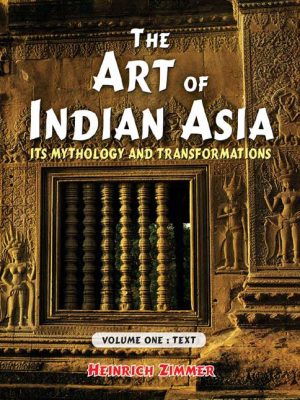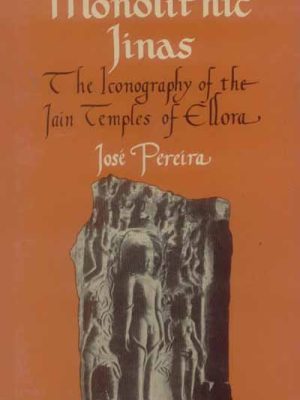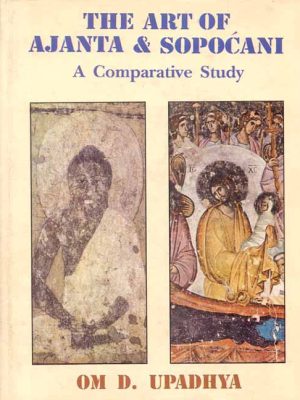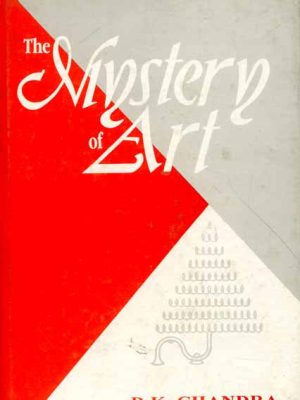Shop
Best Seller Items
-
2023 Hindu Deity Desk Calendar
“Raam Raam for every day of the year! Our 2023 calendar featuring Hindu deities is here to bring peace and blessings to your home. #Hinduism #calendar #2023”
[ABOUT THE THEME ]: 2023 Desk Calendar with Sketches of Hindu Deity for each month. All the artwork is created using Raam Naam Writing. Would look up great on your desk. And a gift that can be given.
[MATERIAL]: 12 months desk calendar format (Jan 2023 – Dec 2023) | Metal Wiro
[PAPER QUALITY]: 350 GSM laminated paper with matte finish & 8.5” x 5.5″ (artwork size) | Imported paper provides a shiny lustrous surface and protects from moisture and water splashes
[ABOUT THE CALENDAR]: Calendar designed to brighten your workspace, with 12 months of illustrated artwork. A self-inspiring themed calendar, infused with botanical illustrations, is a great addition to your desk. A perfect companion for your 2023. The pages are wire-bound in a glistening golden color and a stand makes it easy to prop up at work or at home. 12 months desk calendar format
[WHY BUY OUR CALENDAR]: Powerful illustrations to help you stay positive and motivated | Sleek and compact calendar to add pop of color to your desk | Unique and original illustration
[GREAT CHOICE FOR GIFTING]: Our calendars are unique, thoughtful, original, cute, and pretty. Makes an ideal choice for gifting.
₹299.00₹350.002023 Hindu Deity Desk Calendar
₹299.00₹350.00 -
2022 Dharmic Desk Calendar with Sanskrit quotes
[ABOUT THE THEME ]: 2022 Desk Calendar with unique Sanskrit quotes with meaning for each month. With some beautiful some rare some known temple images in the background. Would look up great on your desk. And a gift that can be given.
[MATERIAL]: 12 months desk calendar format (Jan 2022 – Dec 2022) | Metal Wiro
[PAPER QUALITY]: 350 GSM laminated paper with matte finish & 6” x 7.5″ (artwork size) | Imported paper providing a shiny lustrous surface and protects from moisture and water splashes
[ABOUT THE CALENDAR]: Calendar designed to brighten your workspace, with 12 months of illustrated artworks. A self-inspiring themed calendar, infused with botanical illustrations, is a great addition to your desk. A perfect companion for your 2022. The pages are wiro-bound in a glistening golden color and a stand makes it easy to prop up at work or at home. 12 months desk calendar format
[WHY BUY OUR CALENDAR]: Powerful illustrations to help you stay positive and motivated | Sleek and compact calendar to add pop of color to your desk | Unique and original illustration
[GREAT CHOICE FOR GIFTING]: Our calendars are unique, thoughtful, original, cute and pretty. Makes an ideal choice for gifting.₹220.00₹350.002022 Dharmic Desk Calendar with Sanskrit quotes
₹220.00₹350.00 -
Jeerola Pachak Masala Pouch Pack of 4: JalJeera Powder
This can be used with various Foods & Drinks listed below. Soda, Limbu Sarbat, Butter Milk, Curd, Water Melon, Cold Tomato, Green Salad, Fruit Dish, Veg. Sandwich, Wafers, Namkin, All type of Juice and etc…
Jeerola JalJeera Powder
This JalJeera Powder is All in one Masala is one of the best masala products in Gujarat. One Packet comes in the size of 100 Grams and can be stored easily throughout the year in all kinds of weather.
Did You know?
JalJeera Powder from Jeerola Masala is an iconic product of Upleta town in Rajkot District of Gujarat. It is produced by VK Foods and is also famous for making different sharbat and another drinking masalaInsider Story:
V.K. Foods is committed to the fulfillment of our Vision through a powerful focus on Customers, People, and Innovation. VK FOOD will create unique, superior, and economically competitive products through world-class integration of masala/spices expertise, consumer insights, and brand understanding.How to use
Add a teaspoon of the amount in Soda, Limbu Sarbat, Butter Milk, Curd, Water Melon, Cold Tomato, Green Salad, Fruit Dish, Veg. Sandwich, Wafers, Namkin, All types of Juice, and any of your favorite drinks.
₹229.00₹250.00Jeerola Pachak Masala Pouch Pack of 4: JalJeera Powder
₹229.00₹250.00 -
Faba Honey 100% Organic Honey with Discount: Fresh Mixed Flora Honey
Available in 7 different flavors
What is the healthiest type of honey? What is the difference between raw honey and regular honey?
Is Organic Honey worth it?
Sweeten your favorite beverage, smoothie, breakfast cereal and dahi with honey. Use it in cooking sauces, grill marinades, salad dressings and dips. A teaspoon of honey mixed with fresh tulsi leaf and ginger juice is a soothing remedy for sore throats. Crystallisation in honey is a natural phenomenon dependant on the balance of natural sugars in it. Honey can be decrystallised by placing the jar in a bowl of warm water-do not heat the honey.
You can checkout Jamun Honey here: https://indicbrands.com/product/faba-honey-100-organic-honey-jamun-honey/
Follow us for more updates on https://twitter.com/indicbrands
Manufactured & Packaged By Faba Honey, Sona Enterprise Rampur Civil Lines Area, Rampu.
₹325.00 – ₹620.00Faba Honey 100% Organic Honey with Discount: Fresh Mixed Flora Honey
₹325.00 – ₹620.00 -
Tringrahi Soft Toys Individual Pairs Radha Krishna Dolls Sita Ram Dolls Shiva Parvati dolls
A beautiful pair of Radha Krishna Dolls, Sita Ram dolls, Shiva Parvati Dolls, Gaur Nitai Dolls, Krishna Balraam Dolls, Shiv Nandi Dolls and Narsimha Prahlad dolls ( also known as rag dolls ) made in high-quality material. Its a must for every child. Introduce your child to the beautiful world of Ancient and Spiritual India through our dolls. Tell your kids stories of Radha Krishna and let them enact it through their pair of dolls. It’s washable and non-toxic.
These are made by the vrajavasi’s of Sri Dham Vrindavana and we promote Cruelty-free and Fair Trade policy.
This product comes in total 6 different types of Pair, please select your pair before checkout 🙂
Did you know:
Handmade dolls in the Indian traditional way are one of the most important toys for the children of India. The proof of using such dolls in ancient time as toys date back to the Harappa site.Inside Story:
These dolls are suitable for Golu Dolls. These are made by the Vrajavasi’s of Sri Dham Vrindavana and we promote Cruelty-free and Fair Trade policy.Read more about our the creator’s journey: How Indian Dolls are loved by children around the world
Follow us on Twitter : Indic Brands on Twitter
₹499.00₹555.00 -
Latest Cute Bal hanuman Doll Toys by Tringrahi
New Addition of Cute Bal Hanuman dolls
A beautiful and cute Bal Hanuman dolls ( also known as rag dolls ) made in high-quality material. It’s a must for every child. Introduce your child to the beautiful world of Ancient and Spiritual India through our dolls.
Tell your kids stories of Hindu Gods like Hanuman and let them enact it through their pair of dolls. It’s washable and non-toxic.
These are made by the Vrajavasi’s of Sri Dham Vrindavana and we promote Cruelty-free and Fair Trade policy.
Checkout more dolls set by Tringrahi at this link
Follow Indic Brands and Tringrahi on Twitter.
₹340.00₹400.00Latest Cute Bal hanuman Doll Toys by Tringrahi
₹340.00₹400.00
-
Stupa and Its Technology: A Tibeto-Buddhist Perspective
Stupa and Its Technology: A Tibeto-Buddhist Perspective
Among all the religious monuments of the world, the stupa has the longest
uninterrupted historical development. Though modelled after the Indian
prototype, the stupa architecture was developed in all the countries where
Buddhism had flourished. Over time, the structural shape of the stupa
underwent significant modifications in India and the other Asian Buddhist
countries.
The present study shows how Tibet became a treasure house of Buddhist
culture and literature–highlighting important texts dealing with stupa
architecture. Various ritual activities associated with the construction of
the stupa are described along with the eight fundamental types of
Tibeto-Buddhist stupas and their main structural components. A survey of
the stupas found in the upper Indus Valley in the Leh region of Ladakh
shows their similarity to the Tibeto-Buddhist tradition. The value of the
book is enhanced by an appendix with English translation of four important
Tibetan texts preceded by transliteration.
This monograph is the first in the new sub-series of the IGNCA on the
Buddhist stupas, which would not be restricted to India alone. It is hoped
that such studies will enable the art-historians and archaeologists to
understand this important structural form in totality in relation to its
wide geographical spread and the distinctive features of particular
developments in different countries.
₹595.00 -
Indian Art at Delhi-1903
Indian Art at Delhi-1903
The volume was first published as a Catalogue and Guide to the Indian Art Exhibition held at Delhi ‘to concide with the Durbar of 1902-03’. The volume is a unique work of documentation of ninteenth-century indian craftsmanship. The text is enriched with graphic representation of rare specimens of Indian artistry. Its usefulness as ‘a gazetteer and an ethnographical dictionary’ makes it invaluable for the students engaged in research of the history of craft and industry in India.
₹1,495.00Indian Art at Delhi-1903
₹1,495.00 -
Silparatnakosa of Sthapaka Niranjana Mahapatra: A Glossary of Orissan Temple Architecture
Silparatnakosa of Sthapaka Niranjana Mahapatra: A Glossary of Orissan Temple Architecture
The Silparatnakosa is a 17th century Orissan text composed by Sthapaka Niranjana Mahapatra describing all the parts of the temple types of Orissa such as the Manjusri and Khakara. It also contains a section on sculpture on image-making (Pratimalaksana). This text though much later than the temples described reflects the still living tradition and it contributes much to clarify the terminology of Orissan temple architecture. The text has been edited from three palmleaf MSS and translated with numerous illustrations.
₹895.00 -
Silpa Prakasa by Ramacandra Mahapatra Kaula Bhattaraka: Medieval Orissan Sanskrit text on temple Architecture
Silpa Prakasa by Ramacandra Mahapatra Kaula Bhattaraka: Medieval Orissan Sanskrit text on temple Architecture
“The Silpa Prakasais an important addition to the existing literature on Indian Silpa Texts.” the text goes into a great detail of the architecture, the iconography and the symbolism of all the parts of the temple. Its unique contribution lies in the description of Yantras or symbolic diagrams underlying the architecture as well as sculpture. This edition will be extremely valuable for understanding not only temple construction but the entire symbolism underlying the unique temples of Orissa.
₹1,795.00 -
Indian Rock Art and its Global Context
Indian Rock Art and its Global Context
This is a unique volume in the history of rock art studies, meant at once
for the advanced scholar, serious student and the curious but conscientious
layman, co-authored by K.K. Chakravarty and R.G. Bednarik, who co-chaired
the indian Rock Art session of the World Archaeological Congress 3 at Delhi in
1994. It is a synoptic but comprehensive survey, illustrated by 221
photographs and sketches, including 172 photographs in colour. The two
scholars have not only described the latest state of research on rock art,
but also transported rock art studies into the realm of interdisciplinary,
inter-cultural analysis. Buttressed by an indicative map of the rock art
regions, a list of major up to date direct dating results on rock art, a
glossary of keywords related to spatial, temporal, technological,
managerial categories, and an index, this volume blends precise,
dispassionate descriptions with eloquent evocations. It blends conclusions
distilled from rigorous, hard headed field research with penetrating
criticism and assessment of the evidence. It combines a ruthless brevity
and density with extraordinary felicity and clarity of language. Above all,
it is an wonderful attempt at dealing with the problems of understanding,
which dog human attempts to comprehend the meaning and shape of human
creativity.
₹1,700.00Indian Rock Art and its Global Context
₹1,700.00 -
Residential Architecture in Bhoja’s Samaranganasutradhara: Introduction, Text, Translation and Notes
Residential Architecture in Bhoja’s Samaranganasutradhara: Introduction, Text, Translation and Notes
The Samaranganasutradhara, composed in the 11th century and commonly attributed to King Bhoja of Dhara, is one of the most remarkable silpasastras of northern India. Consisting of more than seven thousand slokas, it contains not only detailed descriptions of temples, but also a comprehensive exposition of residential architecture. This book is an annotated translation of the central passages on residential architecture accompanied by a study of the Samaranganasutradharaês sources, the problem of authorship, and related matters. It is rounded off by a comprehensive glossary of technical terms and illustrations.
₹695.00 -
Elephanta: The Cave of Shiva
Elephanta: The Cave of Shiva
Three descriptive essays and numerous fascinating photographs, taken
especially for this volume, allow the reader to experience a major monument
of Indian art: the sixth century temple cave on Elephanta Island, in Bombay
harbor, and its extraordinary stone sculptures. The authors and the
photographer capture the atmosphere of the cave and the spirit of the
sculptures, which portray the relentless energy and paradoxical power of
Shiva, greatest of all Hindu gods. The photographs are particularly
successful in revealing the dramatic alternation of light and dark that is
so much a part of the beauty of the cave’s interior. Ms. Berkson’s trained
and loving eye picks out the subtleties of the main sculptures and humorous
details that the visitor might miss even on the site.
In the text Wendy O’Flaherty interprets the myths of Shiva depicted in the
sculpture; Ms. berkson’s essay supplies historical background and a
stylistic analysis; and George Michell examines the overall structure of
the cave to show that it is a mandala-like image of the heavenly mountain
residence of Shiva and even of the structure of the universe itself.
“The author as well as the publishers of the work deserve to be
congratulated for providing this easily accessible guide to Elephanta.”
Research Bulletin Vishveshvaranand
Vedic Research Institute,Vol.I, Dec.2002
₹695.00Elephanta: The Cave of Shiva
₹695.00 -
Evolution of Stupas in Burma: Pagan Period: 11th to 13th Centuries A.D.)
Evolution of Stupas in Burma: Pagan Period: 11th to 13th Centuries A.D.)
This work is the outcome of painstaking research on the evolution of stupas in Burma, Pagan Period, 11th to 13th centuries a.d. Burma known as the land of pagodas is nowhere so rich in the number of pagodas as in Pagan. The stupendous vastness of the ruins reminiscent of the glory that was of Pagan
in its heyday inspired this study. The evolution traced back to the beginning of the stupa structure in India, deals with the various architectural phases (duly illustrated) it passed through ending with the final stage in the Rhwedagum Pagoda in Rangoon (Burma). Apart from the material side of the study, there is the need of looking into the aesthetic and spiritual side of the evolution. That religious architecture is a barometer of the material prosperity and social outlook of the people,
besides being the handmaid of the spiritual aspirations of the devotees, is amply discernible in this study.
The value of the art survey in this work is further enhanced by the inclusion of over 138 photographs. Moreover, besides the magnificent Pagan art, it gives a comparative view of the religious architectual development in the Asian countries contemporaneous with the Pagan Period.
₹595.00 -
Alice Boner Diaries: India 1934-1967
Alice Boner Diaries: India 1934-1967
Apart from an insight into Alice Boner’s keen observation of Indian temple-architecture and art the present selection of her diary entries also depict the struggles of Alice Boner, the artist. In her work she strove to represent the spirit of India which her intensive experiences of over 40 years in the country revealed to her. Her experiences also included contact with personalities of the calibre of Rabindranath Tagore, Swami Laxman Joo, Sarojini Naidu, Ustad Alauddin Khan, and her admiration of Mahatma Gandhi. As a remarkable diarist Alice Boner puts her thoughts to pen in an elegant, eminently readable style. The reader feels with her the thrill and awe at the ancient monumental sights all over India, reads about her vision of the principles of sacred art, and shares with her the inner conflict of one torn between the two worlds of Europe and India. Over and over again this unique woman, with roots in the European culture, expresses her deep attachment to India. Most of the diary entries are in German and English and these have been retained for the sake of the originality of her fine expression, interspeersed with a selection of sketches from her vast repertoire. In addition, the German portions have been translated here for the benefit of English readers.
₹995.00 -
Despair and Modernity: Reflections from Modern Indian Painting
Despair and Modernity: Reflections from Modern Indian Painting
Dehejia has tried to create a place within the main frame of culture and philosophy of Indian art for a legitimate analytic theory called despair. Dehejia’s effort creates a space for the modern within Indian classicism by negotiating the philosophy of despair in classical terms. As a result the basic schism that has grown in recent years between the philosophy and history of modern art on the one hand and the philosophy and history of traditional arts is today cloder to being breached
₹295.00 -
Vastu: Astrology and Architecture: (Papers presented at the First All India Symposium on Vastu, bangalore, held on June 3-4, 1995)
Vastu: Astrology and Architecture: (Papers presented at the First All India Symposium on Vastu, bangalore, held on June 3-4, 1995)
Vastu Sastra an important limb of Jyotisa or astrology is an ancient science and study of architecture and engineering.
The present volume is an outcome of a symposium on Vastu. One of the goals of the symposium was to revive the lost glory of Vastu and show its relevance to modern times. The book covers different aspects of construction from planning to execution. It underline the role of Jyotisa astrology in Vastu principles.
The book will stimulate greater interest in ancient Vastu principles amongst modern architects and enginers and present them a new perspective which will raise their creativity to new untouched heights.
The book has been divided into three broad sections covering different aspects of Vastu Silpa-I. Vastu and its Relevance to Modern Times; II. Vastu and Jyotisa; and III. Vastu and Temple Architecture comprising thirty-three articles in all. Their contributors represent a range of viewpoints on Vastu principles. All write with intelligence and insight keeping in view its relevance with modern times needs of architecture and engineering.
₹545.00 -
Exploring India’s Sacred Art: Selected Writings of Stella Kramrisch Ed. & with a biographical Essay
Exploring India’s Sacred Art: Selected Writings of Stella Kramrisch Ed. & with a biographical Essay
Exploring India’s Sacred Art presents a selection of Stella Kramrisch’s influential essays, along with a biographical essay. The writings collected here emphasize the cultural and symbolic values of Indian art. The first section discusses the social and religious contexts of art. This is followed by essays on various forms of ritual art. The section entitled “The Subtle Body” is derived from her term for the form that underlies concrete shapes; it includes studies of literary and visual symbolism. Further essays concentrate on formal and technical aspects of temple structure and painting in the context of their symbolic meaning. Over 150 illustrations, many of them prepared especially for this volume, provide a vital visual dimension to her writings. Also included is Joseph Dye’s comprehensive bibliography of her works. Exploring India’s Sacred Art testifies to the life and work of one of this century’s greatest art scholars and provides an unparalleled source of insight into Indian art and culture.
₹1,495.00 -
The Hindu Temple (2 Vols.)
The Hindu Temple (2 Vols.)
The Hindu Temple is the sum total of architectural rites performed on the basis of its myth. The myth covers the ground and is the plan on which the structure is raised. It explains in detail the religious and spiritual significance of the temple b4y means of copious references to Sanskrit texts„both sacred and scientific. It depicts the Hindu Temple as not merely a heap of brick, stone or wood but a visible symbol of aspirations of pious men and women, the throbbings of their hearts in religious fervor and their endeavor for the attainment of salvation. The first four parts of this volume are devoted to the philosophy of temple architecture. Part V deals with the origin and development of the temple from the Vedic fire altars to the latest forms. Part VI discusses the pyramidal and curvilinear superstructures in the main varieties of the _ikhara, the
_ikhara enmeshed in Gavaksas and the composite _ikhara. Part VII described the proportional measurements and the rhythmic disposition of the garbha-grha and the vertical section. It discusses the proportions of the Mandapa and the types of temples described in the ancient sanskrit texts like the Brhatasmhita and the Samarnganasutradhara.
This most comprehensive and authoritative treatise of ancient Indian Temple Architecture will prove of immense help to the students of ancient Indian culture.
This two-volume work explains in detail the religious and spiritual significance of the temple by means of copious references to Sanskrit texts–both sacred and scientific. It depicts the Hindu Temple as not merely a heap of brick, stone or wood but a visible symbol of aspirations of pious men and women, the throbbings of their hearts in religious fervor and their endeavor for the attainment of salvation.
The first four parts of the work are devoted to the philosophy of temple architecture. Part V deals with the origin and development of the temple from the Vedic fire altars to the latest forms. Part VI discusses the pyramidal and curvilinear superstructures in the main varieties of the Sikhara, the Sikhara enmeshed in Gavaksas and the composite Sikhara. Part VII describes the proportional measurements and the rhythmic disposition of the garbha-grha and the vertical section. It discusses the proportions of the Mandapa and the types of temples described in ancient Sanskrit texts like the Brhatsamhita and the Samaranganasutradhara.
This most comprehensive and authoritative treatise of ancient Indian Temple Architecture will prove of immense help to the students of ancient Indian culture.
Contents (Vol. 1)
PART I: The Site, Part II: The Plan, Part III: Plan and Supernal Man, Part IV: The Substances of which the temple is built, Names and Origins of the Temple, Part VI. The Superstructure, Part VII: Proportionate Measurement and Varieties of the Temple (Volume 2) Part VIII: The Images of the Temple, Explanation of Plates, Appendix, Sources, Index, Plates I-IXXX.
₹4,000.00The Hindu Temple (2 Vols.)
₹4,000.00 -
Indian Sculpture: Ancient, Classical and Mediaeval
Indian Sculpture: Ancient, Classical and Mediaeval
Anyone with an understanding of art in general and a knowledge, however slight, of Indian things, will, on being shown a work of Indian sculpture, unfailingly label it Indian. Differences in age and origin, however clearly marked to the discerning eye, when pointed out to the outsider, will be apprehended only with more or less difficulty. There is something so strong, and at the same time unique, in any Indian work of art that its ‘Indianness’ is felt first of all, and what it is, is seen only on second thought.
How this Indianness is expressed in terms of relation between line, surface, volume and other elements of visulisation is dealt with in this book. There are permanent qualities throughout the fabric of Indian sculpture which are discussed in detail. These essential qualities, all inter-related and inseparable, contain within their compass the life of Indian plastic art.
The book surveys the structure of Indian sculpture in its relevant aspects. The underlying and essential qualities are viewed in their permanency throughout the special conditions that the single monuments imply. Their outward connections, geographical and chronological, are seen to resolve themselves into ethical problems and those of the artistic process itself.
While stylistical investigations are the basis of this book, Indian sculpture is dealt with as conditioned by the Indian craftsman. His consciousness makes him known to himself as a part of nature and his work is the form of this ‘naturalism’. Its degree and aspects vary according to the levels of his consciousness.
₹800.00 -
The Muktesvara Temple in Bhubaneswar
The Muktesvara Temple in Bhubaneswar
The Muktesvara Temple in Bhubaneswar
About the Author(s)
WALTER SMITH
₹950.00 -
Symbols in Art and Religion: The Indian and the Comparative Perspective
Symbols in Art and Religion: The Indian and the Comparative Perspective
Symbols in Art and Religion: The Indian and the Comparative Perspective
About the Author(s)
KAREL WERNER
₹545.00 -
The Art of Indian Asia, 2 Vols.: Its Mythology and Transformation: Volume One: Text, Volume Two: Plates
The Art of Indian Asia, 2 Vols.: Its Mythology and Transformation: Volume One: Text, Volume Two: Plates
The present work is intended not as a handbook but as an introduction to its subject, to be read from beginning to end. Each section is preparation for the next. Chapter I, presenting as it does a brief historical outline of the transformations of Indian art as well as a key to the symbology of the forms, can be used as a guide during the first perusal of the pictures. For the reader then wishing to find quickly the several portions of text referring to any spefific group of monuments, a copious index has been supplied, together with textual references in the Description of Plates and cross-references in the footnotes. Marginal references to the Plates, furthermore, accompany the text. These should make possible an easy and rapid correlation of the materials of the two volumes.
The first two groups of Plates in the text volume illustrate, for the most part, the anthropological and comparative observations of the text. Included among them, however, are a few photographs that are indispensable to Dr. Zimmer’s argument but do not meet the aesthetic standard of the Plates volume. On the other hand, the final cluster of text Plates constitutes. an independent pictorial appendix, illustrating the miniature and Rajput art of the eleventh to nineteenth centuries A.D. Dr. Zimmer’s notes on this subject had not been developed beyond preliminary jottings, and could not be incorporated in any major section of the text. But since there is actually a rather special, very delicate, lyric quality about these paintings on palm leaf and paper, which sets them apart, somewhat from the tradition of the stone monuments, it is not inappropriate that they should be given a separate place.
₹8,000.00 -
Monolithic Jinas: The Iconography of the Jain Temples of Ellora
Monolithic Jinas: The Iconography of the Jain Temples of Ellora
Monolithic Jinas: The Iconography of the Jain Temples of Ellora
About the Author(s)
CARMEL BERKSON
₹600.00 -
The Art of Ajanta and Sopocani: A Comprehensive Study
The Art of Ajanta and Sopocani: A Comprehensive Study
Pauranic Prana-aesthetics, a finer shade different from that of Vitalistic aesthetics (the earlier having breathing-rhythm of “Kshaya- Vriddhi” – diminution and augmentation – other than the latter’s emphasis only on the rhythm of augmentation) has been delineated in this study with examples from the world’s two of the best art-monuments: Ajanta (India), now not remaining unknown even to the most casual connoisseur, and Sopocani (Yugoslavia), the most significant and monumentally beautiful work of Byzantine art.
Tracing Prana-aesthetics as the aesthetics of inner-light coded in the creeper-motif by the artists of Ajanta, this work emphasises decoding of the creeper-motif by Byzantine artists culminating into the frescoes of Sopocani done in Hellenistic Byzantine aesthetics beatified by Hesycast meditation to which that
of Buddhists was not unknown. Comparisons of various determinant aspects, aesthetics and artistic denominators, and constraints not allowing similar consummation are properly investigated to substantiate the thesis that Pranaaesthetics transfigures at Ajanta but transubstantiates at Sopocani. The significance of the anabolic aspects of this aesthetics is highlighted especially as a way out from the reductivistic tendencies of the present day visualarts straining them upto the stage of catabolic dissolution.
₹1,500.00 -
The Mystery of Art
The Mystery of Art
The Mystery of Art lets the forms of art tell their own tale. Instead of analyzing the art expressions this narrative work invites the reader to re-discover the functions of art. The observation of the art-scenes starts with the present and winds its way backward through time and history. In the course of this journey the different art-expressions reveal themselves in a novel light.
About the Author(s)
D K Chandra
₹295.00The Mystery of Art
₹295.00




